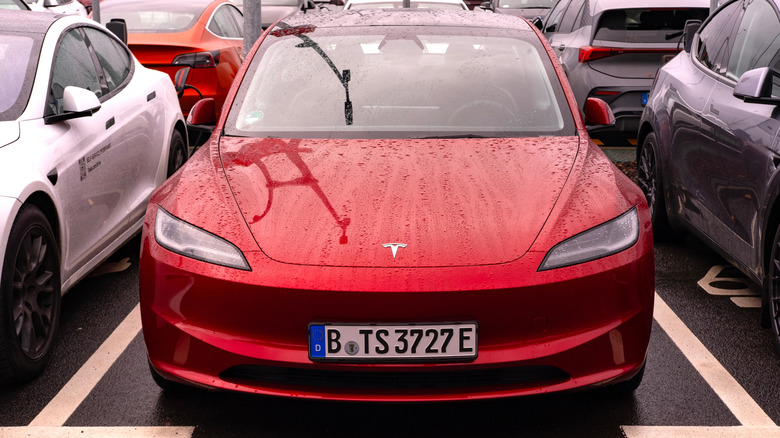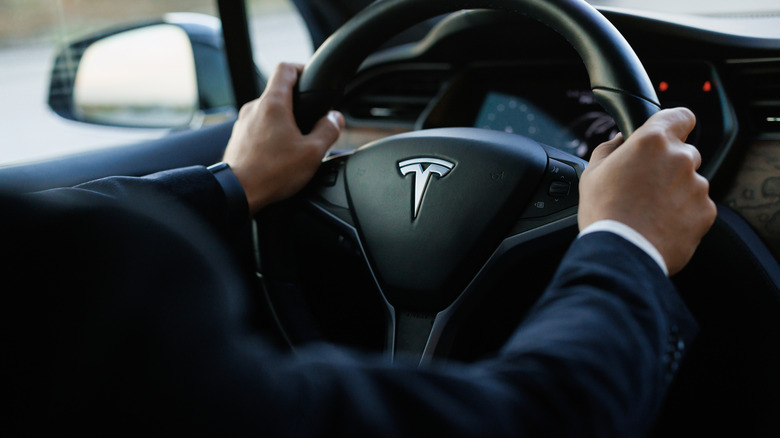Tesla's Autopark Doesn't Always Work - Here's When To Take Control
Despite an increasing field of all-electric competition, Tesla's cars still offer plenty of features that make them stand out from the crowd. One of the most notable is its Autopilot semi-autonomous driving system, which includes Autopark, a feature designed to enable the car to maneuver into parking spaces by itself. Autopark can certainly be useful at times, but it isn't infallible, and there are plenty of instances where it's advisable not to leave the feature to its own devices.
In the Model Y's owner's manual, Tesla says that Autopark might not work when the car is traveling faster than 8 mph or when the road surface is textured, such as a brick road. The parking space that the car is aiming for will also need to have at least three visible lines, either parking lines or a detectable curb. If it doesn't, Autopark might not be able to accurately detect the space.
Autopark should also not be used when the vehicle is towing anything or if a bike rack is fitted to the car. Since the system relies on sensors and cameras to detect its surroundings, it's not advisable to use Autopark in adverse weather conditions like thick fog or heavy rain. If the sensors or cameras are damaged, the system might also be unable to park properly. If that wasn't enough, Tesla says the system also struggles with sloped road surfaces and walls and pillars that are adjacent to the space.
How to take back control from Autopark
Tesla's advice regarding Autopark remains the same across all of its models, with the Model 3 and Cybertruck's manuals issuing almost identical warnings about the feature. To ensure that you're fully up to speed with the limitations of Tesla's semi-autonomous driving systems, it's always best to check your car's owner's manual before using them for the first time. It's also potentially worth checking out the general Autopilot rules to follow if you're new to semi-autonomous driving technology.
If you're using Autopark and need to take control back from the car, there are multiple ways to do so. Autopark is automatically cancelled when the driver either moves the steering wheel, presses the brake pedal, or shifts. Alternatively, the right scroll button on the steering wheel can also be used to cancel the maneuver. The car will also cancel Autopark if it cannot properly position the vehicle into the requested space within seven maneuvers.
Autopark is capable of parking both in perpendicular spaces and in parallel spaces, but it won't work in angled spaces. Some drivers might find certain types of parking trickier than others, but if you struggle with parallel parking, there are a few tips you can try to ensure that you parallel park perfectly every single time.

